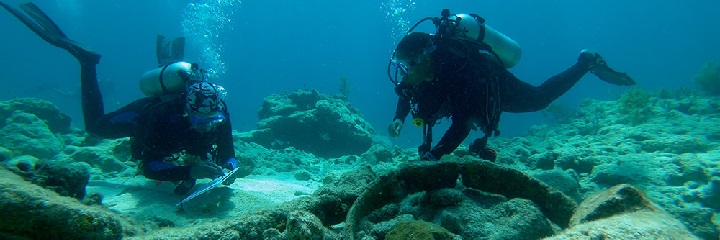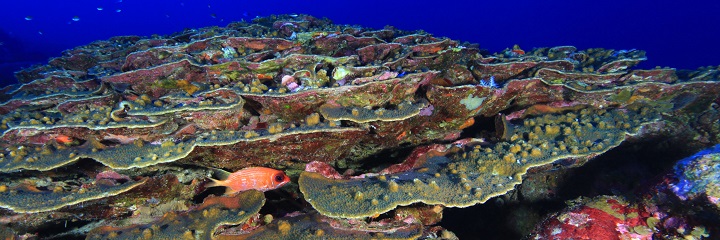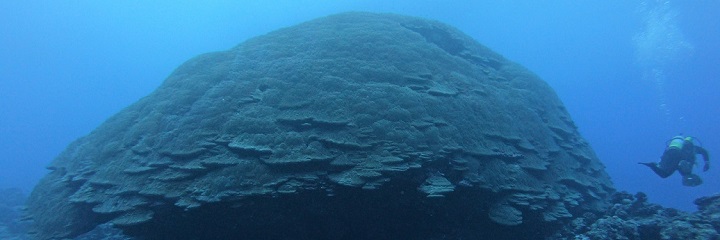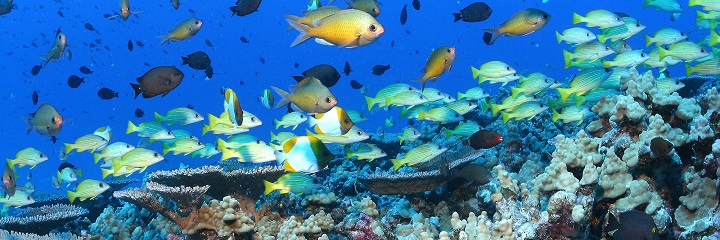- ABOUT US
- PROGRAM AREAS
- CONSERVATION APPROACH
- EDUCATION
- MULTIMEDIA
NOAA is celebrating Get into Your Sanctuary Days
In August, NOAA celebrates Get into Your Sanctuary Days, a nationwide event that encourages people to appreciate and learn more about the National Marine Sanctuary System. National marine sanctuaries protect natural and cultural marine resources and provide places for sustainable recreational activities.
Below, get to know the national marine sanctuaries that are home to some of the world’s most magnificent coral reef ecosystems.
Florida Keys National Marine Sanctuary was designated in 1990 to protect the coral reef ecosystem in Florida that runs from south of Miami, through the Florida Keys, to the Dry Tortugas. The national marine sanctuary protects over 2,900 square nautical miles of coastal and ocean waters. Recreational activities include a visit to the Florida Keys Eco-Discovery Center, diving, snorkeling, fishing, boating, and marine wildlife viewing. Please consider booking your trip into the sanctuary with a Blue Star operator. Blue Star operators promote responsible and sustainable diving, snorkeling, fishing and boating.

Flower Garden Banks National Marine Sanctuary was designated in 1992 to protect coral reef ecosystems in the Gulf of Mexico. The sanctuary includes three underwater mountains called salt domes: East Flower Garden Bank, West Flower Garden Bank, and Stetson Bank. Located 70 to 115 miles off the coasts of Texas and Louisiana, the national marine sanctuary is an excellent location for fishing and diving.

The National Marine Sanctuary of American Samoa was designated in 1986 to protect the coral reef ecosystem in Fagatele Bay. The sanctuary was expanded in 2012, and is now the largest in the system, at 13,581 square miles. The national marine sanctuary includes some of the oldest and largest coral heads in the world, providing abundant opportunities for diving and snorkeling. Visitors can also explore the Tauese P.F. Sunia Ocean Center.

Papahānaumokuākea Marine National Monument is co-managed by multiple offices and programs within NOAA, the U.S. Fish and Wildlife Service, and the state of Hawai’i. It was established in 2006 to protect natural and cultural resources, and in 2016, it was expanded to 582,578 square miles. Papahānaumokuākea is now one of the largest protected areas on the planet. You can visit the Mokupāpapa Discovery Center in Hilo to view and learn more Learn about corals and the wildlife in Papahānaumokuākea.

Related Stories and Products
About Us

The NOAA Coral Reef Conservation Program was established in 2000 by the Coral Reef Conservation Act. Headquartered in Silver Spring, Maryland, the program is part of NOAA's Office for Coastal Management.

The Coral Reef Information System (CoRIS) is the program's information portal that provides access to NOAA coral reef data and products.
Work With US
U.S. Coral Reef Task Force
Funding Opportunities
Employment
Fellowship Program
Contracting Assistance
Graphic Identifier
Featured Stories Archive

Access the archive of featured stories here...
Feedback
Thank you for visiting NOAA’s Coral Reef Conservation Program online. Please take our website satisfaction survey. We welcome your ideas, comments, and feedback. Questions? Email coralreef@noaa.gov.
Stay Connected
Contact Us
NOAA’s Coral Reef Conservation Program
SSMC4, 10th Floor
1305 East West Highway
Silver Spring, MD 20910
coralreef@noaa.gov
